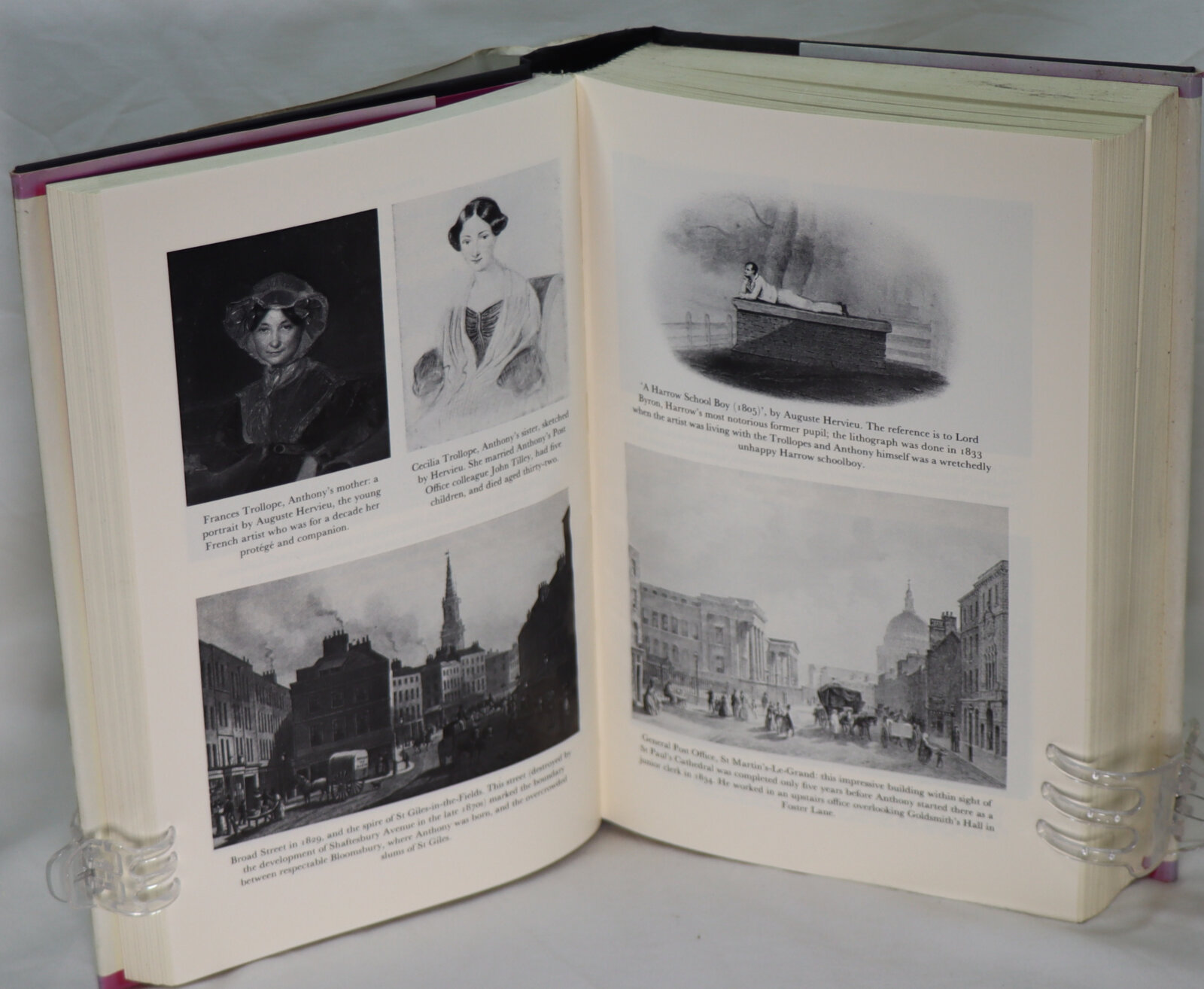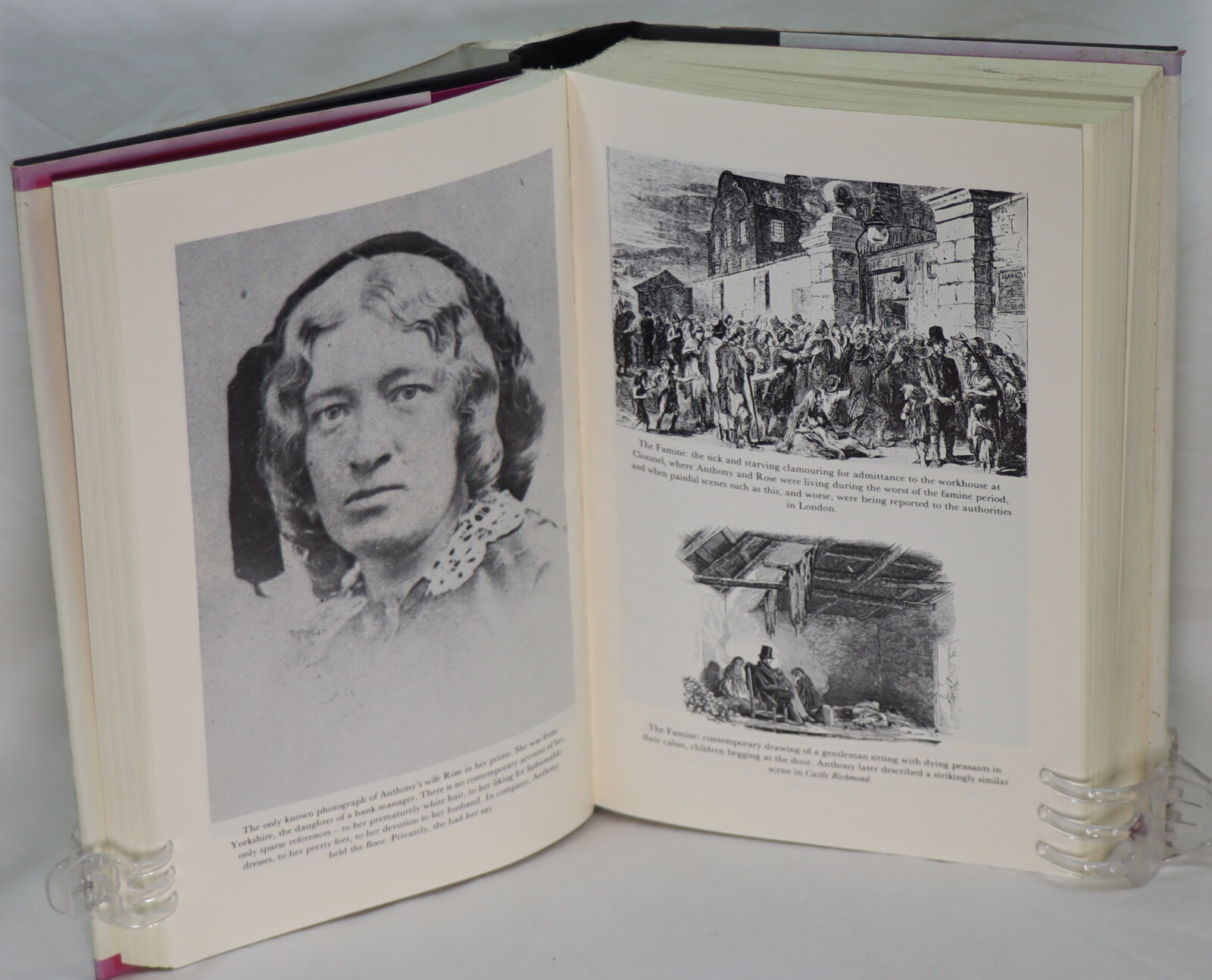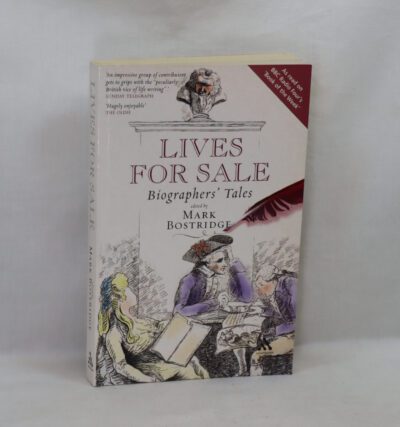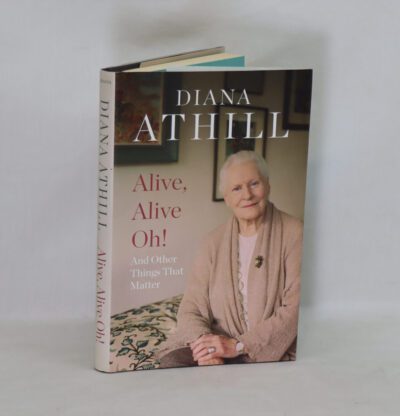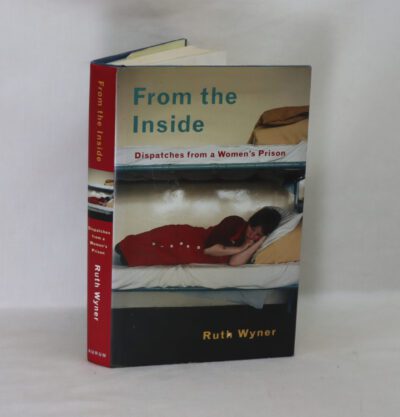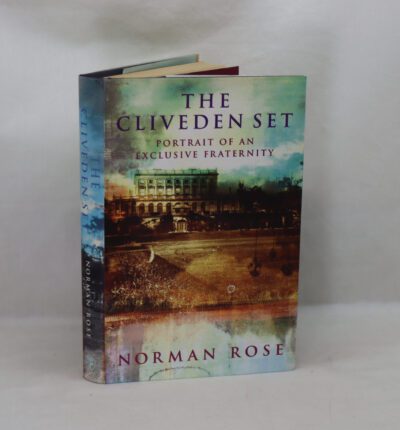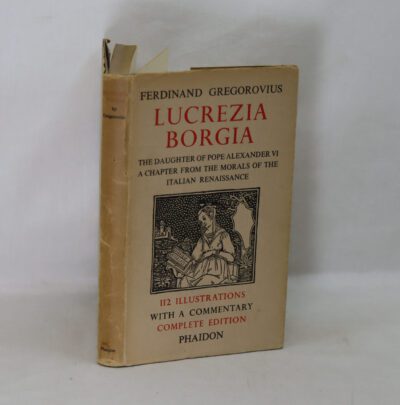Trollope.
By Victoria Glendinning
ISBN: 9780312314989
Printed: 1992
Publisher: Hutchinson. London
| Dimensions | 17 × 24 × 6 cm |
|---|---|
| Language |
Language: English
Size (cminches): 17 x 24 x 6
Condition: Fine (See explanation of ratings)
Your items
Item information
Description
In the original dustsheet. Black cloth binding with gilt title on the spine.
-
F.B.A. provides an in-depth photographic presentation of this item to stimulate your feeling and touch. More traditional book descriptions are immediately available.
Anthony Trollope is, with Dickens, the most enduringly popular Victorian novelist. All of his 47 novels have been printed – two of which have been made into TV series, “The Pallisers” and “The Barchester Chronicles”. Born in 1815, Trollope initially made his living working for the Post Office – introducing the pillar box into Britain. He was also an enthusiastic rider to hounds, a Liberal parliamentary candidate, a magazine editor, a traveller, the devoted friend of Thackeray and George Eliot and the author of over 60 books and a vast amount of journalism. This book explores Trollope’s private life – his unhappy childhood, his relationships with his wife and a beautiful American, Kate Fielding – while creating a picture of the times in which he lived.
Reviews:
-
I have forgotten, though it is only a couple of years ago, exactly how or why I came to read my first Trollope-novel (‘The Warden’) but I vividly remember how that immediately struck a chord in me and how I carried on from there to read all Barsetshire-novels, all Palliser-novels, a couple of others (‘The way we live now’ is stunning if I may say so), and ‘An Autobiography’. It seemed only natural and logical to proceed from there with Victoria Glendinning’s biography. But once I had ordered it from amazon, it sat unopened and unread on my shelves for more than a year. Perhaps I was daunted by its sheer size? Be that as it may, I needn’t have worried because it actually enthralled me as much and read as easily as any novel by its subject. As any good biographer Glendinning is clearly fascinated by her subject, but she doesn’t allow this to cloud her judgement or gloss over Trollope’s shortcomings or less positive character traits. Indeed, the impression it left me with is one central to many Trollope-novels i.e. that a person is rarely if ever wholly good or totally evil. But given that Glendinning – for all Trollope’s faults – describes him with great sympathy makes Trollope leap from the pages as lifelike as any character of one of his own books. Glendinning succeeds in painting in great detail both ‘the private man’ (as son to a ruined father and formidable mother, husband, Post office employee, father to two sons) and ‘the author’. I mention both because there seems to have been – at least among people who only knew Trollope superficially – quite a few who declared themselves amazed that this often rather loud and garrulous man should be the author of such books and creator of very different but completely believable fictional characters. Besides all that, this biography is also very well informed about the day and age Trollope lived in, and clearly shows how he both adhered to what was thought ‘proper’ at the time but simultaneously often had his own ideas (which he then voiced through one or more of his fictional characters). All in all after having read this impressive book I have acquired a far greater understanding of his books, and must confess I have developed a great sympathy for him as well, not least because Trollope was to a large degree aware of his own shortcomings. It is somehow strangely endearing to read of Trollope, of whom I had come to think of as some superhuman literary giant, for instance struggling with a chronic sense of never having achieved enough, or fretting over his children’s future as much as any of us will do.
-
I have enjoyed reading the Barchester novels and the Palliser novels and I’ve always wanted to know more about the author. All I knew about him before reading this fascinating biography was that he worked for the Post Office and wrote before he went to work. This biography is well written in an easy accessible style with many references to Trollope’s own autobiography and to his novels and non-fiction. You do not need to have read any of Trollope’s writing to enjoy this book. It shows Trollope in the context of his era – Charles Dickens was famous, as were George Eliot and Thackeray and all were known to Trollope. He spent some of his life in Italy and in Ireland as well as living in London, Hertfordshire and other parts of the Home Counties. He travelled extensively at home and abroad and wrote books and travel articles about his experiences. His writing about Australia still provides one of the best sources of information for life in that country in the mid nineteenth century. What came over most strongly to me from this book was the sheer enthusiasm and interest Trollope had in people and his surroundings and life in general. His is a larger than life character which some people found overbearing. He had enduring platonic friendships with women which his wife Rose seems to have accepted as being part of her husband’s life. She herself played a large part in getting his novels ready for publication as did his niece, Florence. This is a really interesting book which paints a vivid portrait of Trollope and his relations as well as life in literary circles in the nineteenth century. I recommend it if you want to know more about this much underrated nineteenth century author. I shall be re-reading the novels with greater insight and enjoyment.
Anthony Trollope (24 April 1815 – 6 December 1882) was an English novelist and civil servant of the Victorian era. Among his best-known works is a series of novels collectively known as the Chronicles of Barsetshire, which revolves around the imaginary county of Barsetshire. He also wrote novels on political, social, and gender issues, and other topical matters.
Trollope’s literary reputation dipped during the last years of his life, but he regained somewhat of a following by the mid-20th century.
Want to know more about this item?
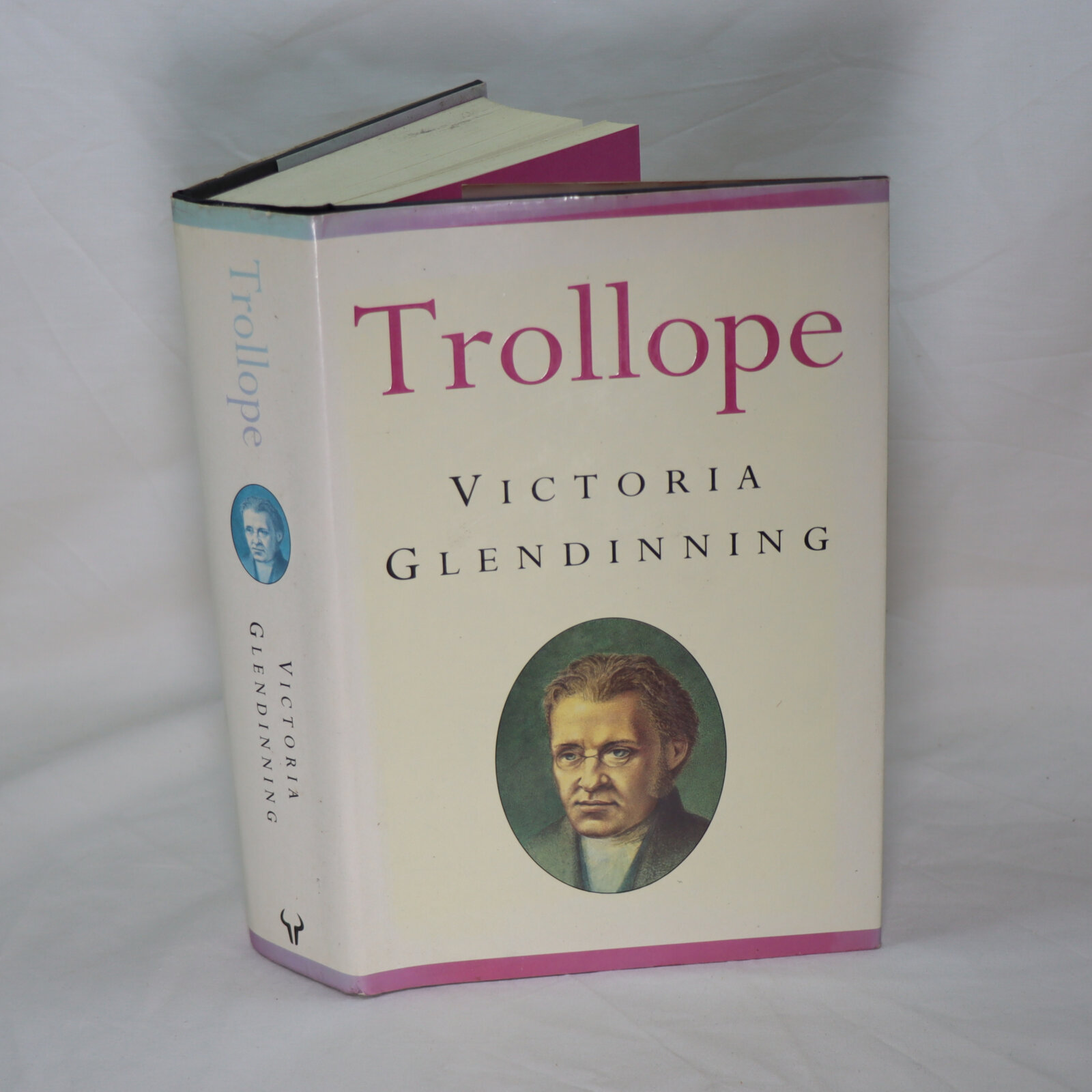
Related products
Share this Page with a friend

